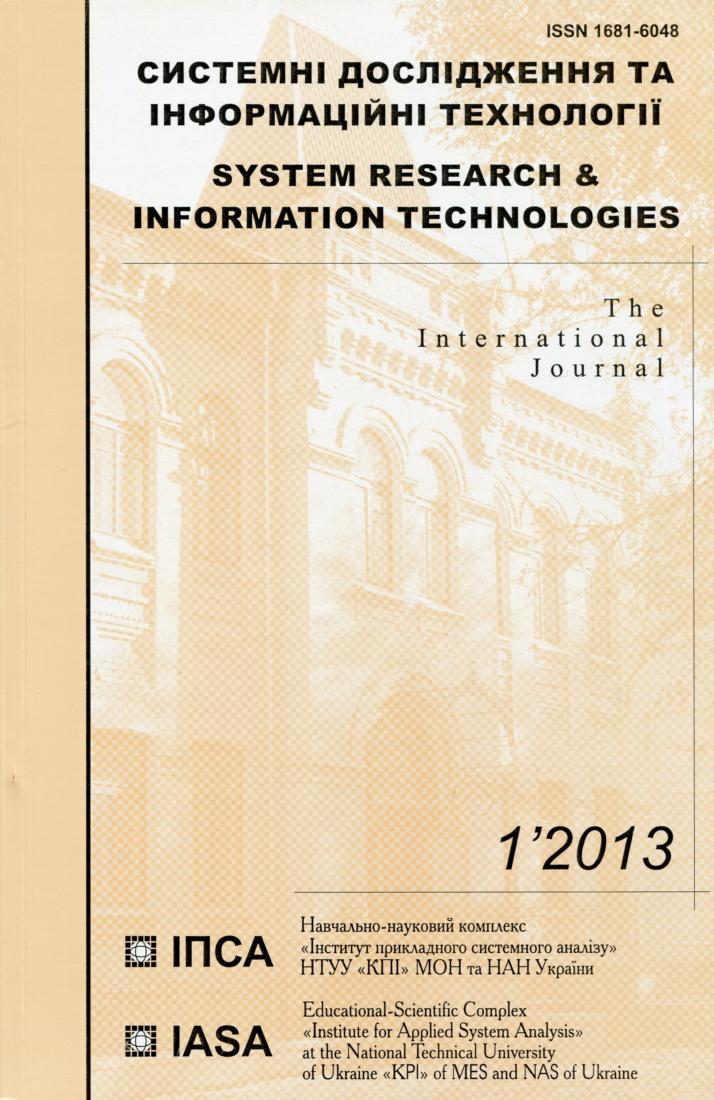On the problem of situation description based on prototypes
Abstract
The use of prototypes for situation representation allows solving the situation interpretation problem in modern situational and cognitive control systems. Here the problem of representation of complex situations characterized by the set of incomplete additional descriptions is solved with help of fuzzy prototypes. The case in which the initial information about the situation is a finite set of fuzzy or linguistic estimations of numerical features is addressed. It is proposed to represent a prototype in the form of a fuzzy vector with parametrically defined components. A method of forming prototypes hierarchy based on specification principle, which only requires storing limited set of simple, the most common prototypes, is proposed. Simple prototypes storing is organized in content addressable memory. To increase the memory access rate the problem of efficient distance estimation in the prototype space is solved. Complex composite prototypes are formed dynamically on the basis of activation vector of the simple prototypes. The time complexity of the corresponding algorithm is linearly dependent on the memory capacity.References
Melikhov А.N., Bershteyn L.S., Korovin S.YA. Situatsionnyye sovetuyushchiye sistemy s nechetkoy logikoy. — M.: Nauka. Fizmatlit, 1990. — 272 s.
Kargin А.А. Vvedeniye v intellektual’nyye mashiny. Kniga 1. Intellektual’nyye regulyatory. — Donetsk: Nord-Press, DonNU, 2010. — 526 s.
Petrenko T.G., Reznichenko YU.S. Problemno-situatsionnyy podkhod k postroyeniyu avtomatizirovannogo trenazhёra operatora // Iskusstvennyy intellekt. — 2008. — № 4. — C. 483–492.
Marakas G.M. Decision support systems in 21-st century. — US edition. — Upper Saddle River, NY.: Prentice Hall, 1999. — 528 p.
Power D.J. A brief history of decision support systems // DSS Resources. — 2007. — http://DSSResources.com/history/dsshistory.html.
Dzhekson P. Vvedeniye v ekspertnyye sistemy: per. s angl.: uch. pos. — 3-e izdaniye. — M.: Izdatel’skiy dom "Vil’yams", 2001. — 624 s.
Osuga S. Obrabotka znaniy. — M.: Mir, 1989. — 293 s.
Priobreteniye znaniy: per. s yaponskogo / Pod red. S. Osuga, YU. Saeki. — M.: Mir, 1990. — 304 s.
Hayes-Roth F., Jacobstein N. The state of knowledge-based systems // Communications of the ACM. — 1994. — 37, № 3. — Р. 27–39.
Lyuger Dzh. Iskusstvennyy intellekt: strategii i metody resheniya slozhnykh problem. — 4-e izd. — M.: Izdatel’skiy dom "Vil’yams", 2005. — 863 s.
Аnderson Dzh. Kognitivnaya psikhologiya / per. s angl. S. Komarov. — 5-e izd. — SPb.: Piter, 2002. — 496 s.
Solso R. Kognitivnaya psikhologiya. — 6-e izd. — SPb.: Piter, 2006. — 589 s.
SHiffman KH.R. Oshchushcheniye i vospriyatiye. — 5-e izd. — SPb.: Piter, 2003. — 928 s.
Myshleniye obraznoye. Psikhologiya: psikhologicheskiy slovar’. — 2005. — http://azps.ru/handbook/m/mshl792.html.
Wandell B.A. What’s in your mind? // Nature Neuroscience. — 2008. — 11, № 4. — P. 384–386.
Romesburg C. Cluster analysis for researchers. — NY: Lulu Press, 2004. — 344 p.
Kargin А.А., Petrenko T.G. Modeli dinamicheskikh situatsionnykh intellektual’nykh mashin // Iskusstvennyy intellekt. — 2000. — № 1. — C. 82–90.
Smolin D.V. Vvedeniye v iskusstvennyy intellekt: konspekt lektsiy. — M.: FIZMАTLIT, 2004. — 208 s.
Maesschalck R., de Jouan-Rimbaud D., Massart D.L. The Mahalanobis distance // Chemometrics and intelligent laboratory systems. — 2000. — 50. — Issue 1 (4 January 2000). — P. 1–18.
Vaart van der A.W. Asymptotic statistics. — Cambridge, UK: Cambridge University Press, 2000. — 460 p.
Banerjee A., Merugu S., Dhillon I. S., Ghosh J. Clustering with Bregman divergences // Journal of machine learning research. — 2005. — № 6. — P. 1705–1749.
Bhattacharyya A. On a measure of divergence between two statistical populations defined by their probability distributions // Bulletin of the Calcutta Mathematical Society. — 1943. — 35. — P. 99–109.
Leonenkov А.V. Nechetkoye modelirovaniye v srede MATLAB i fuzzyTECH. — SPb.: BKHV-Peterburg, 2003. — 736 s.
Аltunin А.E., Semukhin M.V. Modeli i algoritmy prinyatiya resheniy v nechetkikh usloviyakh. — Tyumen’: Izd-vo Tyumenskogo gos. un-ta, 2002. — 268 s.
O’Sullivan B., Goerzen J., Stewart D. Real world haskell. — Sebastopol, CA: O’Reilly, 2008. — 714 p.
Hopfield J.J. Neural networks and physical systems with emergent collective computational abilities // The National Academy of Sciences: proceedings of. — 1982. — 79. — Р. 2554–2558.

